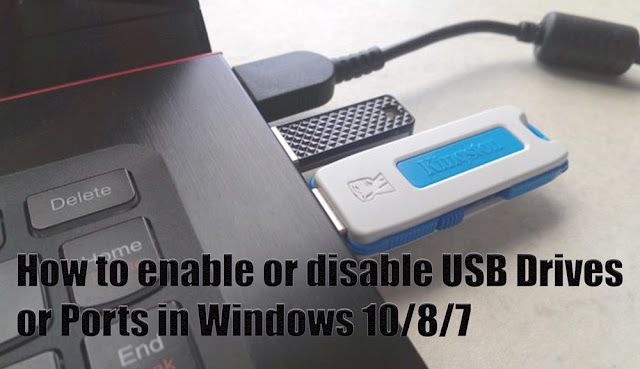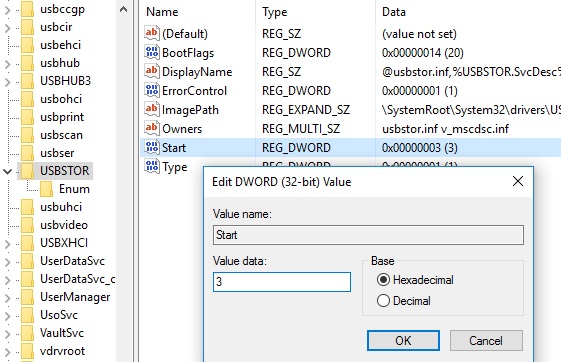There are multiple ways to protect your data on Windows computers. One of them is to disable or enable USB ports on your computer. If you are wondering how to block USB drives to control which devices are connected to your PC, then you have come to the right place.
In order to protect copying data to connected USB drives by unauthorized login from your/shared PC we can use various blocking methods.
- Disable Or Enable USB Ports On Windows 10 Through Registry Editor
- Disable Or Enable USB Ports On Windows 10 Through Use Device Manager
- Enable Or Disable USB Ports On Windows 10 Through Use BIOS
1. Disable Or Enable USB Ports On Windows 10 Through Registry Editor

Step 1: To open Registry Editor, type regedit.exe in search bar beside Start menu and press Enter.
Note:Press Windows and R and type regedit.exe to open Registry Editor.
Step 2: You will get a user account control prompt, click Yes.
Step 3: Now you will get Registry Editor window and follow this path:
HKEY_LOCAL_MACHINE\SYSTEM\CurrentControlSet\ Services\USBSTOR
Step 4: Once you get to the key, locate Start DWORD the right hand side of the window. If you want to disable USB ports, change the value from 3 to 4 and if you want to enable it, change the value to 3.


2. Disable Or Enable USB Ports On Windows 10 Through Use Device Manager
If you don’t want to make changes to registry editor, use device manager. Upon disabling USB ports, computer will not respond to any of the devices connected to it. To get them working, you have to enable the USB ports.
Note: It is recommended to create a system restore point before making any major changes to your system.
Step 1: Go to Start button and right click on it to get a context menu. Now select Device Manager to launch it.
Step 2: Navigate USB Controllers (Universal Serial Bus Controllers). You will get list of USB options list. Right click each of the entries to Disable USB devices. Click Yes, to confirm the change.
3. Enable Or Disable USB Ports On Windows 10 Through Use BIOS
Some of the computer manufacturers provide you with an option to disable or enable USB ports in BIOS. Go to BIOS mode to check out the options available to enable USB ports. If you get confused and don’t know where to locate the option, check the user manual of your computer.


